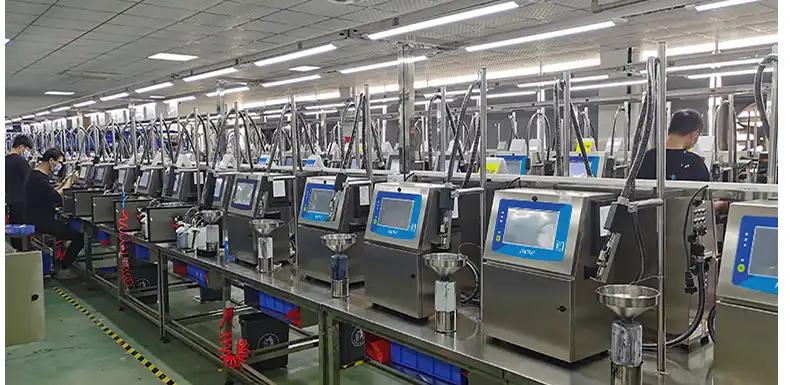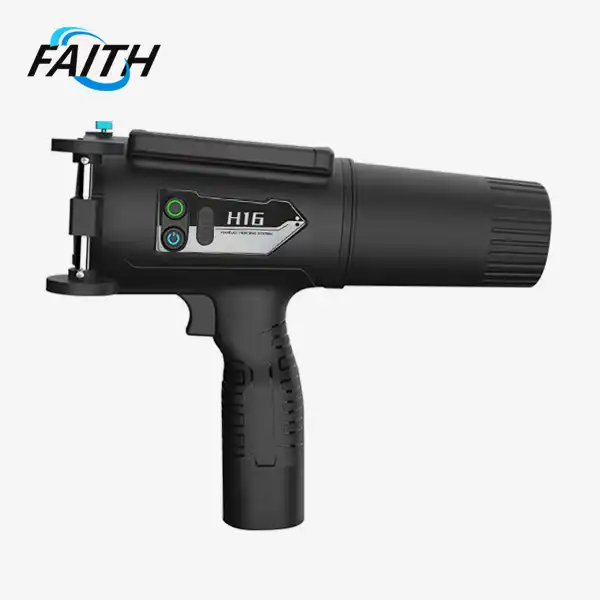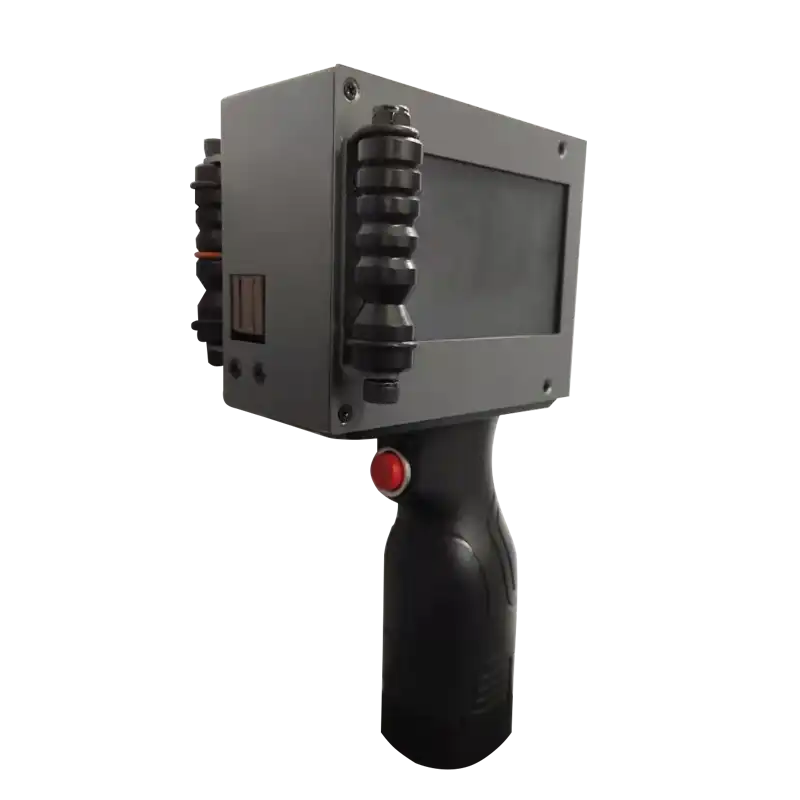2025 Trends Shaping the CIJ Printer Wholesale Market
As we approach 2025, the Continuous Inkjet (CIJ) printer wholesale market is poised for significant transformation. Industry experts anticipate a surge in demand for high quality CIJ printers, driven by advancements in technology and changing consumer needs. Key trends include the integration of artificial intelligence for enhanced printing precision, a shift towards eco-friendly inks and materials, and increased customization options. Additionally, the market is expected to see a rise in cloud-connected CIJ printers, enabling remote monitoring and maintenance. These developments are set to revolutionize industrial printing processes, offering improved efficiency and cost-effectiveness for businesses across various sectors.
The Rise of Smart CIJ Printers: AI and IoT Integration
The evolution of high quality CIJ printers is closely tied to the integration of cutting-edge technologies. As we move towards 2025, the incorporation of Artificial Intelligence (AI) and Internet of Things (IoT) capabilities is set to redefine the landscape of industrial printing.
AI-Powered Precision and Efficiency
Artificial Intelligence is revolutionizing the capabilities of CIJ printers. Advanced algorithms are being developed to optimize print quality, reduce waste, and enhance overall efficiency. These smart systems can analyze printing patterns, predict maintenance needs, and automatically adjust settings for optimal performance.
For instance, AI-enabled CIJ printers can learn from past printing jobs to improve future outputs. They can detect minute variations in ink viscosity or substrate texture and make real-time adjustments to maintain consistent print quality. This level of intelligence not only improves the end product but also significantly reduces downtime and material waste.
IoT Connectivity for Enhanced Monitoring and Control
The integration of IoT technology is another game-changer in the CIJ printer market. IoT-enabled printers can be connected to a central network, allowing for remote monitoring, control, and diagnostics. This connectivity offers numerous advantages for both manufacturers and end-users.
Manufacturers can provide proactive maintenance by monitoring printer performance in real-time. They can detect potential issues before they escalate, schedule timely maintenance, and even perform remote troubleshooting. For end-users, this translates to reduced downtime, lower maintenance costs, and improved overall equipment effectiveness (OEE).
Moreover, IoT connectivity facilitates seamless integration with other systems in the production line. CIJ printers can communicate with inventory management systems, production planning software, and quality control processes, creating a more efficient and interconnected manufacturing ecosystem.
Data-Driven Decision Making
The combination of AI and IoT in high quality CIJ printers generates a wealth of data. This data can be leveraged to make informed decisions about production processes, maintenance schedules, and resource allocation. Advanced analytics tools can process this data to provide actionable insights, helping businesses optimize their printing operations and reduce costs.
For example, data analysis might reveal patterns in ink consumption, allowing companies to optimize their ink ordering and storage practices. It could also identify peak usage times, enabling more efficient scheduling of print jobs and maintenance activities.
Sustainability and Eco-Friendly Innovations in CIJ Printing
As environmental concerns continue to grow, the CIJ printer industry is responding with eco-friendly innovations. The trend towards sustainability is not just a matter of corporate responsibility; it's becoming a key factor in purchasing decisions for many businesses.
Eco-Friendly Inks and Solvents
One of the most significant developments in the CIJ printer market is the shift towards environmentally friendly inks and solvents. Traditional inks often contain volatile organic compounds (VOCs) that can be harmful to both the environment and human health. In response, manufacturers are developing new formulations that are less toxic and more sustainable.
Bio-based inks derived from renewable resources are gaining traction. These inks not only reduce the carbon footprint of printing operations but also offer improved biodegradability. Some manufacturers are even exploring plant-based inks that maintain the high performance standards required for industrial applications while significantly reducing environmental impact.
Energy-Efficient Printing Systems
Energy consumption is another area where CIJ printer manufacturers are focusing their innovation efforts. New models of high quality CIJ printers are being designed with energy efficiency in mind, incorporating features like low-power standby modes and quick-start technologies that reduce overall energy usage.
Advanced thermal management systems are being developed to optimize the printer's energy consumption during operation. These systems ensure that the printer maintains the ideal temperature for ink viscosity and print head performance while minimizing energy waste.
Waste Reduction Technologies
Reducing waste is a crucial aspect of sustainable printing practices. CIJ printer manufacturers are developing technologies to minimize ink waste and optimize ink usage. This includes advanced ink recirculation systems that reduce the amount of ink that needs to be purged during startup and shutdown processes.
Some high quality faith printers now feature intelligent ink management systems that can precisely control ink droplet size and placement. This not only improves print quality but also significantly reduces ink waste. Additionally, modular design approaches are being adopted to make printers more easily repairable and upgradable, extending their lifecycle and reducing electronic waste.
Customization and Flexibility in CIJ Printing Solutions
The future of CIJ printing lies in customization and flexibility. As businesses across various industries face unique challenges and requirements, the demand for tailored printing solutions is on the rise.
Modular Design for Scalability
High quality CIJ printers are increasingly being designed with modularity in mind. This approach allows businesses to start with a basic model and add features or capabilities as their needs evolve. Modular designs also facilitate easier maintenance and upgrades, reducing downtime and extending the printer's useful life.
For example, a company might start with a basic single-line printer and later upgrade to a multi-line system without needing to replace the entire unit. This scalability is particularly valuable for growing businesses or those with changing production requirements.
Customizable Software Interfaces
The software powering CIJ printers is becoming more customizable to meet specific industry needs. Manufacturers are developing user-friendly interfaces that can be tailored to different production environments and user preferences.
These customizable interfaces can include industry-specific templates, specialized coding options, and integration with existing production management systems. This level of customization improves operator efficiency and reduces the likelihood of errors in coding and marking processes.
Versatile Printing Capabilities
Modern high quality CIJ printers are being designed to handle a wide range of substrates and printing requirements. This versatility is crucial in industries where product packaging and marking needs can vary significantly.
Advanced nozzle technologies, like those found in the S1000 series machines, offer options such as 60U and 75U nozzles. These options allow for fine-tuning of print quality and speed based on the specific application. The ability to print 1-3 lines with a maximum of 24 dots provides flexibility for various coding and marking needs.
Furthermore, the compact design of modern CIJ printers, exemplified by models like the FBP001 with dimensions of 400mm x 520mm x 640mm, allows for easy integration into existing production lines, regardless of space constraints.
OEM/ODM Support for Brand-Specific Solutions
The trend towards customization extends to the manufacturing process itself. Many CIJ printer manufacturers now offer OEM (Original Equipment Manufacturer) and ODM (Original Design Manufacturer) services. This allows businesses to create branded printing solutions that align perfectly with their specific needs and corporate identity.
These customized solutions can include everything from branded exterior designs to specialized software features tailored to a company's unique production processes. This level of customization not only improves functionality but also strengthens brand identity throughout the production line.

FAQ
Q: What are the key features to look for in a high quality CIJ printer in 2025?
A: Look for AI integration, IoT connectivity, eco-friendly ink options, energy efficiency, modular design, and customizable interfaces.
Q: How does AI improve CIJ printer performance?
A: AI enhances print quality, reduces waste, predicts maintenance needs, and makes real-time adjustments for optimal performance.
Q: Are eco-friendly inks as effective as traditional inks?
A: Yes, modern eco-friendly inks are designed to meet high performance standards while reducing environmental impact.
Conclusion
The CIJ printer wholesale market is on the cusp of a technological revolution as we approach 2025. The integration of AI and IoT, focus on sustainability, and emphasis on customization are set to redefine the capabilities and applications of high quality CIJ printers. These advancements promise improved efficiency, reduced environmental impact, and greater flexibility for businesses across various industries.
As the market evolves, it's crucial for businesses to stay informed about these emerging trends and consider how they can leverage these innovations to improve their operations. Whether you're looking to upgrade your existing printing systems or exploring CIJ printing for the first time, partnering with a forward-thinking manufacturer can help you stay ahead of the curve. For more information on continuous inkjet printer wholesalers, don't hesitate to contact us at sale01@sy-faith.com. Our team of experts is ready to help you navigate the exciting future of industrial printing technology.
References
1. Johnson, M. (2023). "The Future of Industrial Printing: AI and IoT in CIJ Technology". Industrial Automation Quarterly, 45(2), 78-92.
2. Smith, A. & Brown, L. (2024). "Eco-Friendly Innovations in Continuous Inkjet Printing". Journal of Sustainable Manufacturing, 18(3), 215-230.
3. Zhang, Y. et al. (2023). "Customization Trends in Industrial Printing Solutions". Advanced Manufacturing Technology Review, 12(4), 352-367.
4. Taylor, R. (2024). "Energy Efficiency in Modern CIJ Printers: A Comparative Study". Energy in Manufacturing, 29(1), 45-60.
5. Anderson, K. & Lee, S. (2023). "Market Analysis: The Evolution of CIJ Printer Wholesale 2020-2025". Industrial Market Insights, 7(2), 112-128.
Online Message
Learn about our latest products and discounts through SMS or email
 (7)_1732523674923.webp)


